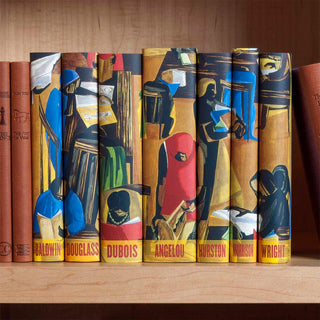Perhaps if you were an “I Heart NYC" t-shirt-clad tourist stepping off the subway and onto the busy cross-section of 135th Street and Malcolm X Boulevard in Manhattan, you may not be thinking about just how many stories are reverberating around you. If you’ve ever heard the phrase “History is Storytelling,” this street is its physical manifestation. Before it became part of the Schomburg Center for Research in Black Culture, the demure two-story marble building on the corner was the 135th Street Branch of the New York Public Library and one of the most important artistic and cultural sanctuaries for African Americans in the early twentieth century. It was one of Langston Hughes’ first stops when he arrived in Harlem in 1921, the place where Nella Larsen worked on her pivotal novel Passing, and the site of the first African American art exhibition in Harlem. At a time when many public libraries in America remained hostile or indifferent to Black readers, 135th Street served as a refuge and free fount of knowledge for those seeking to uncover their history; importantly, it was a collective space that brought Black artists and Black audiences together to rejoice in the works of the vibrant Harlem community. Harlem’s “place to be” was officially designated a New York City landmark in 1981.
For many, the stories found in the 135th Street library were the key to making their own story “clearer,” to reprise James Baldwin. Before renowned artist Jacob Lawrence became the Jacob Lawerence, he was a young teenager taking classes at the library. Forever captivated by the space, he would later create a series of paintings—most notably “The Library” (1960)—honoring the sense of solidarity found at tables and between stacks of 135th Street.
“The Library” is a painting all about the alignment of the past, present, and future stories of African Americans and the celebration of those stories. It is the perfect image to jacket our 19th and 20th Century African American Literature Collection, a seven-volume book set featuring the assorted works of Harlem Renaissance era authors Maya Angelou, Zora Neale Hurston, Toni Morrison, Richard Wright, and James Baldwin, as well as the writings of W.E.B Du Bois and Frederick Douglass. No collection of American fiction or nonfiction is complete without the works of the black authors who, through brilliant writing and incisive social commentary, challenged—and changed—the way we view our country’s established stories and traditions.


